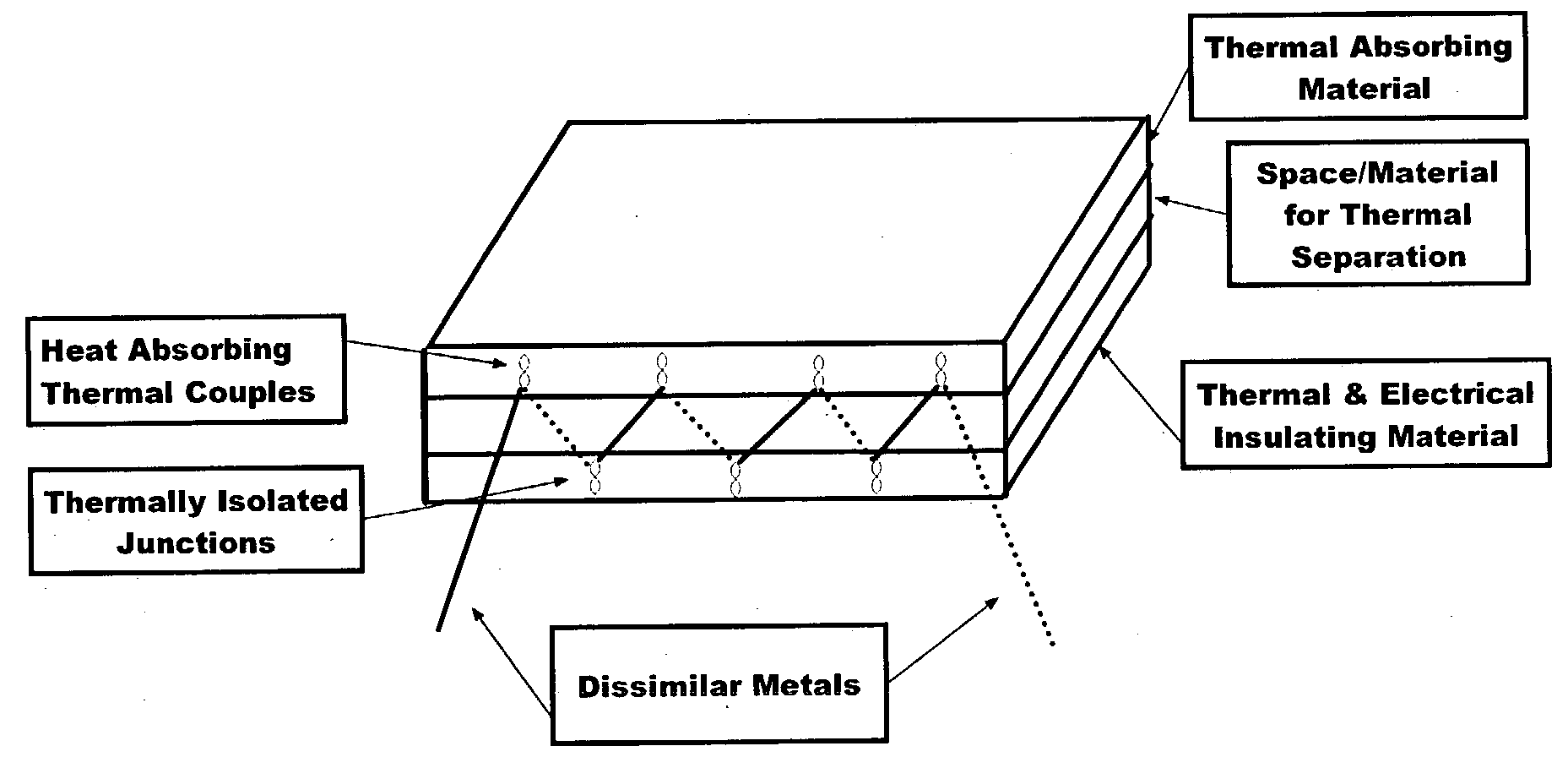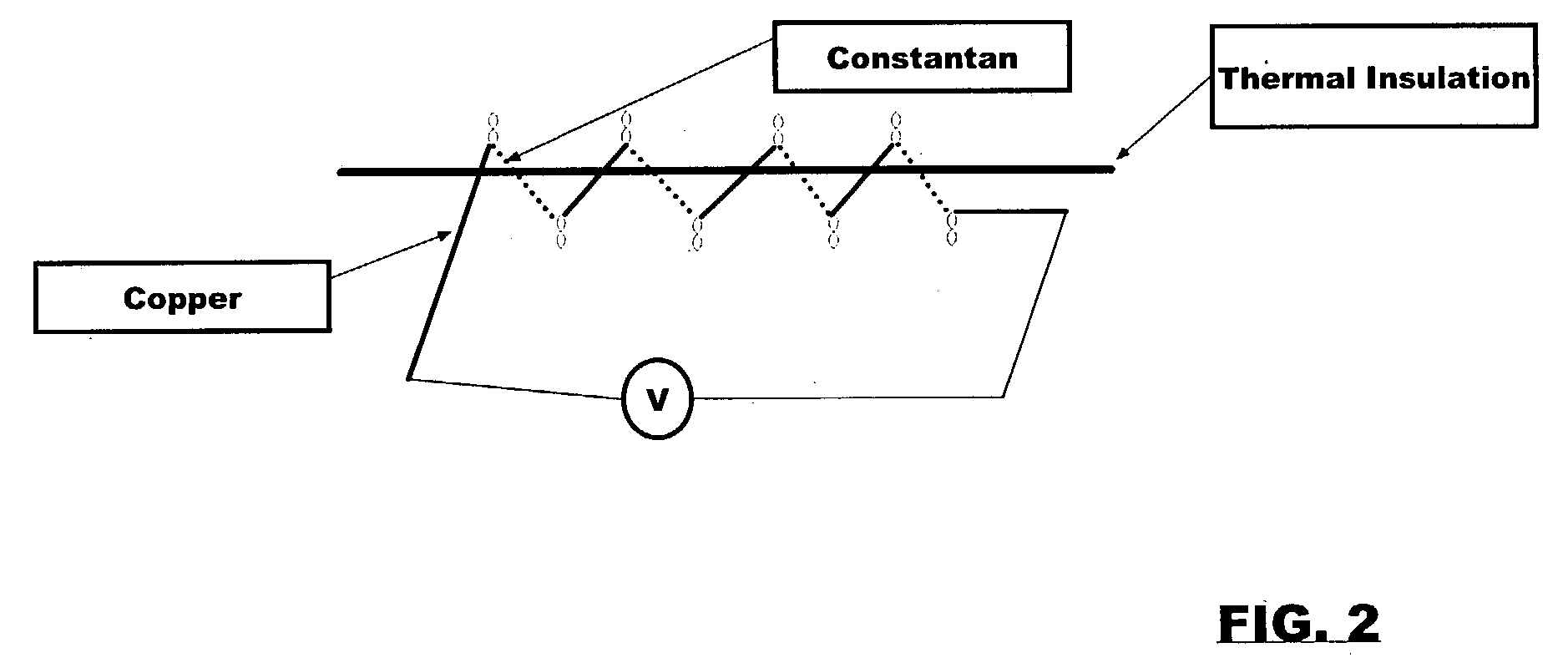Solar thermal electric cells and panels
a solar thermal and electric cell technology, applied in the field of solar thermal electric cells and panels, can solve the problem of quite high production cos
- Summary
- Abstract
- Description
- Claims
- Application Information
AI Technical Summary
Benefits of technology
Problems solved by technology
Method used
Image
Examples
Embodiment Construction
[0004] Our invention utilizes the concept of the Seebeck effect, which was discovered by Thomas Seebeck in 1821. This effect states that when two dissimilar metals are brought together at two ends, and if one end is heated, current will flow in the circuit. This idea of producing electricity relies on the fact that the two ends of the metal pair joints are at different temperatures.
[0005] For the last two decades, thermal absorbing material development has been advancing in a rapid pace. As a result, we now can use these materials to keep one side of the Seebeck circuit at a high temperature, while maintaining one side at a lower temperature. This means it is now possible to apply the Seebeck effect to construct solar thermal electric cells and panels that do not requires semiconductor technology.
[0006] In our invention, the solar electric cell consists of two dissimilar metals in the form of wire, strip, mesh or any other shape, joined together in series and parallel fashions. A la...
PUM
 Login to View More
Login to View More Abstract
Description
Claims
Application Information
 Login to View More
Login to View More - R&D
- Intellectual Property
- Life Sciences
- Materials
- Tech Scout
- Unparalleled Data Quality
- Higher Quality Content
- 60% Fewer Hallucinations
Browse by: Latest US Patents, China's latest patents, Technical Efficacy Thesaurus, Application Domain, Technology Topic, Popular Technical Reports.
© 2025 PatSnap. All rights reserved.Legal|Privacy policy|Modern Slavery Act Transparency Statement|Sitemap|About US| Contact US: help@patsnap.com



